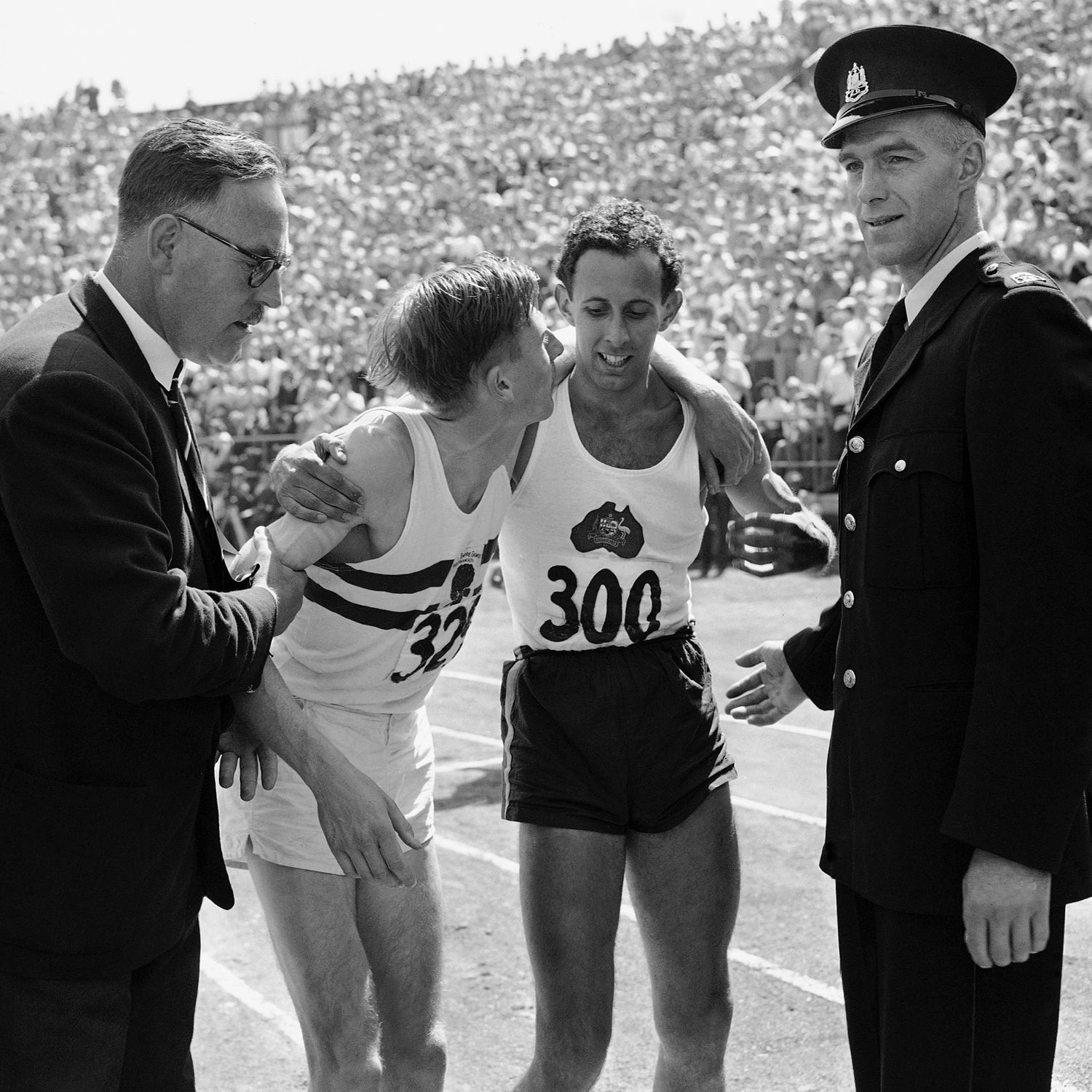You don’t have to be a ruthless Darwinist or Wall Street trader to appreciate the benefits of competition. In sports, when the best athletes go head-to-head on a very public stage, it’s possible to enjoy athletic brilliance at its finest. (For a case in point, check out the between Federer and Nadal.)
There will be will be plenty on display at the IAAF World Championships in Athletics later this month. As we look forward to matchups like the between Usain Bolt and a resurgent Justin Gatlin (may it be as close as ) in Beijing, here’s a look back at some of the rivalries that have defined distance running over the years.
Bannister vs. Landy
Buzz Aldrin may beg to differ, but, in the realm of human achievement, posterity can be cruel to second-place finishers. Even non-running fans know that the first person to run a sub four-minute mile was Roger Bannister, the Oxford med student, who accomplished what was thought to be an impossible feat in May of 1954. Far fewer people are familiar, however, with Australian John Landy, also ran sub four a mere 46 days later, but managed to clock a time almost one-and-a-half seconds faster than Bannister’s.
Later that year, at the Empire Games (i.e. Commonwealth Games) in Vancouver, the stage was set for between the only two men ever to go sub-four at that time. The “Miracle Mile,” as it was dubbed at the time, didn’t disappoint. Landy went out fast and lead most of the race, knowing that his English rival had superior finishing speed. The Australian managed to open up a lead of several meters, but Bannister fought back to be right on his opponent’s heels heading into the final lap. The crucial moment came when Landy looked back over his left shoulder in the final turn, at which point Bannister surged past him on his right, and charged down the final 100 meters to win in 3:58.8. It may not be the slice of immortality he’d envisioned, but in Vancouver’s Empire Fields park, there is a of Landy looking the wrong way as Bannister makes his fateful move.
Coe vs. Ovett
Carrying on Roger Bannister’s legacy, the next generation of British middle distance runners produced two of the most dominant in history: Sebastian “Seb” Coe and Steve Ovett. As professionals, they only raced against each other six times, but would compete indirectly by breaking each other’s records in separate races. Once, and for a mere 45 minutes after setting a new all-time mark in the 1,000 meters in 1980, Coe simultaneously held four world records (800, 1,000, 1,500 and the mile.) Less than an hour later, Ovett ran the fastest-ever mile at the same meet.
The 1978 European Championships 800 meter final was the first track race between these two titans. Improbably, the race was won by an unknown East German named Olaf Beyer. (Ovett to Coe after the race: “Who the fuck was that?”) The real irony, however, didn’t come until the 1980 Moscow Olympics. Known for his powerful late kick, Coe was the clear favorite in the 800, while Ovett seemed a lock in the 1,500, having won 45 consecutive races and gone undefeated for three years. But in a strange turn of events, Ovett while Coe , a trade-off of upsets befitting a great rivalry.
Benoit vs. Waitz
While Coe and Ovett were tearing it up on the track in the late ‘70s and ‘80s, the road belonged to American Joan Benoit and Norwegian Grete Waitz. Between the two runners and a handful of others like Portuguese legend Rosa Mota, women’s distance running entered a new era. When Waitz won the 1979 New York City Marathon in 2:27:33, she became the first woman to break the 2:30 barrier, an achievement that now stands beside her unparalleled nine (count ‘em!) NYC Marathon victories. Benoit won Boston in 1983 in 2:22:43, the fastest-ever marathon run by a woman at the time and an astounding 20 minutes quicker than the last all-time best set on that course eight years before.
Equally dramatic improvements were made in half-marathon world record times during the Benoit/Waitz era; from 1981 to 1987, a period during which one of the two women always held the record, and the all-time best improved from just under one hour, fourteen minutes to 1:08:34. The surge in women’s running helped occasion the first-ever women’s Olympic marathon at the ‘84 Games in Los Angeles, in which the top two finishers were, who else, Joan Benoit and Grete Waitz in that order.
Tergat vs. Gebrselassie
No list of distance running rivalries would be complete without a nod to the two countries that have owned the sport over the last quarter century: Kenya and Ethiopia. While both East African nations have produced their fair share of world and Olympic champions, the head-to-head matchup that trumps all others is the one between Ethiopian Haile Gebrselassie and Kenyan Paul Tergat. The “Emperor” vs. the “Gentleman.”
Although both men have held the world record in the 10,000 meters, as well as the half and full marathons at one point in their careers, the most salient thing about this rivalry is that, in one sense, it wasn’t really a rivalry at all. Tergat’s medal tally in major track competitions (all in the 10,000 meters) amounted to two Olympic silvers (’96, ’00), two world championship silvers (’97, ’99) and one world championship bronze (’95). Guess who won the gold in every single one of those races? Nevertheless, that at the Sydney games remains the best finish of any distance race ever (spoiler alert: Gebrselassie wins by nine hundredths of a second).


